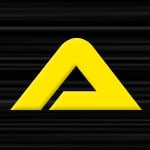time for another journey to the pioneer days of cgi

with greets from my 2.1GB scsi1 disk here comes the
wavefront advanced visualizer
(tav) in version 3.0.1. it's from 1992 and was shipped with a set of 3 ringbook manuals. it's completely coff so the max. irix version it runs on is 5.3 (6.0 with the coff trick might work as well).
tav consists of several independent programs which can however be linked to some extend so that updates made in one of them shows up in the others instantly. the "central" so to say was the director. there one could create and manage global projects and start the individual programs. all programs started from within the director were linked so as soon as something was saved in one of them the others were updated, too. the programs included were:
- model
- preview
- image
- display
- property
- composer
- advanced paint
model
should be quite obvious

yes, you guessed it, this is the very origin of the famous obj file format which still is the most compatible and supported geometry format in history. model doesn't have a project file but just saves its geometry as obj just like lightwave for example. it's also used for materials and texture placement.
in model the whole workflow is built around groups. there is no object level but you only have either point or element (polygon) groups. all operations apply to the currently active group. the feature set was quite impressive for its time and the selection of features is well thought through meaning it pretty much has exactly what you need. in addition it has a quick preview render feature with region support, quad or single 3d viewports and very well designed hidden line and shading modes. from poly to nurbs, all curve and geometry types are supported.
preview
is a sort of misleading name because it's actually the scene setup and animation program. once you're done in model head over to preview and load your obj files. unlike model preview is not based on groups but objects (once more like lightwave). for that there is a central objects list which takes a bit to get comfy with at first. and again as prisms preview does everything else via channels which need to be saved before switching the tool otherwise the changes are not kept. to make that easier there's an auto save function for channels.
unlike most of the other tav programs preview has its own project file which is what you load into the renderer (image) once you're ready for a first try.
image
which also might make you rather think of an imageviwer is the actual renderer. just load the preview project file and set the options. it's an enhanced scanline renderer with raytracing and a few other extras. it's very fast and the results are pretty smooth looking.
display
is actually what one would think: display images. not much to tell here. select the pic, set the options and push the button
 property
property
is the material, light, atmosphere and background editor. it produces not only the well known mtl files but also extra files for all 4 sections. regarding the options and features i'd say it standard. nothing great but not much missing either. and of course, as the other programs it's damn fast. no idea why i didn't make a pic of that but i'll add one later.
composer and advanced paint are not original parts of tav but have been added later.
advanced paint
outlived tav and was later supplied with a number of Alias|Wavefront apps called "viz paint". that one was different from the other tav programs and sort of unique to handle. no standards in operations as you might know them from other programs so it took a bit to get into it.
composer
is not really a shared program like the others but only offers a rendering option for image (and later TDI explore (which wavefront bought)). however despite the lack of integration it's a great compositing program which looked already like everything looked like later after sgi bought and merged wavefront technologies and alias research. iirc it was the last survivor of all wavefront heritage and has even been renamed to "maya composer" once maya was out. late versions had the OptiFX stuff from alias included so it's a good way to get the neat glows, lights and lens flares from alias without having to render them out in poweranimator or maya.
just like prisms tav programs could be run completely in command mode. that was either possible from within the graphical program or in pure terminal mode. for every button there's also a command and the user is free to use whatever he prefers. that also goes for entering values which is done in a quite neat way. for example when you scale or translate something you can either use the mouse or just type ahead and press enter no matter where your cursor is. that gives a very free and creative feeling.
tav was quite picky when it came to folders. some loading procedures did not allow changing the dir or use a full path so you had to start the programs from within your project root to be on the safe side. it also supported a high number of env. variables. probably more than most other programs i used so a properly set up shell was mandatory.
one of the strong points of tav was and still is the ui. i've never seen a more elegant and faster one. it's not only extremely fast but also very smooth and has that noble style. that also includes the interactive behavior of the menus and whatever else is involved. back when it was current and thinking of the prices those things did cost including the sgi machine; somebody starting it after spending so many bucks did really feel like they had something very posh.
i guess that should do it for now. hope you liked the little blast from the past

will see what else i got and post a little more about the other stuff as well ...
EDIT: property pic added. it's not from version 3.0.1 but it's almost the same so should be okay to get an impression.


 SGI O2, 195 MHz R10K, 320 MB ram, AV1 Video i/o card, 36GB HD
SGI O2, 195 MHz R10K, 320 MB ram, AV1 Video i/o card, 36GB HD













 (Maradona)
(Maradona)
 (DavidVilla) A1186 (Xavi) d800 (Pique) d820 (Neymar)
(DavidVilla) A1186 (Xavi) d800 (Pique) d820 (Neymar)


